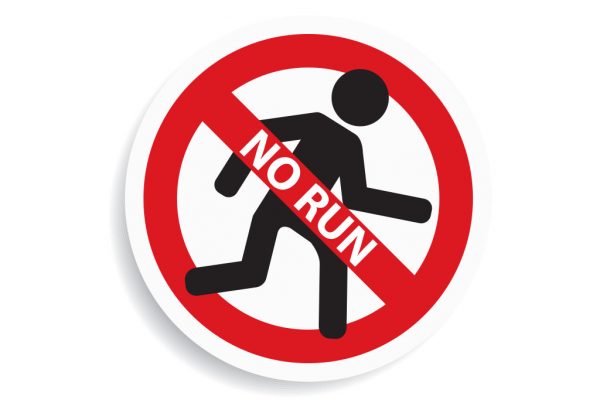15 Important Road Safety Rules to Teach Your Children
You can monitor your kids at home all day if possible to make sure they are not doing something unsafe. However, when it comes to the outdoors, it is important to inculcate behaviour which ensures their safety. Learn about the importance of inculcating children with basic traffic safety rules and the dangers of not doing so.
Why is Road Safety Important for Children?
Teaching kids road safety is a very crucial part of raising the young ones as it directly concerns their physical safety and well-being as they grow and become independent. Rather than isolated lectures and demonstrations, road safety is something that needs to be done continuously and even subtly at times.
Road Safety Awareness for Children
Road accidents are one of the main causes of fatalities and injuries across the globe. According to an NDTV report, 17 people die every hour in India due to road accidents. Most road accidents are caused due to human error, by both pedestrians and drivers. Reckless road behaviour is usually the result of failure to acknowledge the importance of traffic rules and basic road etiquette. With children also being victims in these unfortunate cases, it is important to start teaching them about road safety early on in life.
Safety awareness starts at home and parents are usually the ones guiding their children through the various road traffic rules and regulations. In this endeavour to raise children who are prudently familiar with basic safety habits, you need to mix different styles of teaching and coaching when it comes to sharing facts about road safety for kids. Some of the rules that employ this mix of teaching styles are listed below that will be an invaluable aid to your kids as they learn to navigate roads safely: These road safety rules for kids will go a long way in helping them acquire the skills needed to be secure and guarded pedestrians.
15 Road Safety Rules for Kids
1. Crossing the Road After Looking Both Ways

The thought of children crossing the road is enough to make any adult apprehensive, as unpredictable movements and the natural recklessness of a child can cause accidents. The rule of thumb is that young children should not be allowed to cross the road without adult supervision. As kids grow, they are bound to venture outside, and very soon, they will need to crossroads on their own. Ensure that they understand the importance of stopping and looking both ways before crossing, and never take a chance by hurrying across when there is an approaching vehicle. Set a good example when you take your children out. Conditioning is the best way to teach road crossing skills.
2. Reading and Interpreting Road Safety Signs

It is paramount that kids are aware of the basic traffic signs and signals. When you are driving, and your child is with you, it is the perfect time to teach them about the difference between the red and green signals, and what the yellow signal means. Teach kids about the pedestrian signals too, as the icon of a person walking, is the most common symbol at most intersections. The ability to interpret basic signs can be the foundation of a long-running education, and exposure to the larger set of rules associated with road traffic safety.
3. Concentrating on the Road

Road safety for children starts with the importance of presence of mind. Children can be lost in their world at times and do not notice the environment and structures around them. They need to be taught to pay attention to their surroundings and be responsive to their senses. Car horns and engine sounds indicate the approach of a vehicle even before it is visible, and kids should be taught to listen to them when crossing.
Another habit that leads to accidents is being engaged in gadgets while walking on the road. Older children love their phones, and everything from games and videos to texting can distract them. Make sure that your child understands that their smartphone must stay in the pocket at all times while crossing the road. Even listening to music while taking a stroll should be a strict no-no for your young one.
4. No Running on the Streets

Young children cannot understand the distinction between a safe playground and any other open space, and this is something which poses a risk. Children should be warned against running when they are near a road, or when they are crossing it. Running in open spaces with vehicular access is dangerous and can lead to falls near moving vehicles and other rash incidents. Sometimes demonstrating a few examples of incidents may be necessary, especially if children start exhibiting impatience and disregard to instructions regarding running.
5. Using Sidewalks Only When Walking
Tell your kids to never stray onto the roads. Traffic in India is very haphazard and lacks discipline, with vehicles, especially two-wheelers tending to change lanes a lot. Keep children away from the roads and make them understand that a footpath is the only area where they should be. This rule should be reinforced even on empty streets, as once again, the message should be consistent.
6. Crossing the Road Only at Zebra Crossings

Children (and adults too) should not cross roads at all places. Intersections and zebra crossings are specifically determined areas where pedestrians can cross a road. The risk with children is that they tend to sprint or choose any spot to cross because it may seem empty, or approaching vehicles may be far away. Accidents occur when pedestrians fail to gauge the speed of an oncoming car or are caught unaware by a blind spot. This is the reason why pedestrian crossings and intersections are the safest places to cross. In residential areas with streets where there is no such demarcated area, it is necessary to reinforce the ‘stop, look both ways and cross’ rule.
7. Avoiding Blind Spots
Kids should be taught to never cross at a curve or between parked cars. They should be taught to ascertain all the blind spots before choosing a spot to cross a road. Crossing at bends is a strict no-no. Cars sometimes do not honk at curves, and the pedestrian is completely unaware of any oncoming vehicle because of the blind spot. The same reason applies when crossing between stationary objects. Such objects prevent them from getting a full view of the space around them and can pose a risk.
8. Ensuring Bicycle Safety
All kids love their bicycles, and you may not be able to supervise them as they cycle around the neighbourhood. Here are rules which every kid must follow to ensure safety when cycling:
- A helmet is mandatory: Many times, we overlook this simple detail while paying heed to seatbelt rules and helmets for motor powered two-wheelers. Statistics indicate that this simple accessory can reduce the risk of debilitating head injuries by up to 70%. Make sure your kid is always wearing a high-quality helmet whenever he or she is on a bicycle
- Bicycle maintenance is very important: Flat tyres and malfunctioning brakes can result in loss of control. It is important to keep checking the condition of the bicycle to guard against skidding or breakdowns
- Use a Bicycle-light: It is prudent to use a light on the bicycle, especially when the light changes in the evenings or if it is dark. Not only does the child have a better view of the road, but he is also more visible to other motorists, reducing chances of being hit
- Children should ride bicycles in safe zones where traffic is minimal: Larger main roads should be avoided by children. When cycling, a child should use cycle lanes wherever possible, or stick to the extreme left of the road. Cycling should be avoided if the roads are wet and slippery
9. Set Rules for In-Car Behaviour

Children can be quite restless inside a moving car, which also can lead to bumps and injuries. Here are some rules that kids should follow while travelling in a car:
- Seatbelts should be strapped on. This is a habit that needs to be imbibed for life. While everyone in a car needs to wear a belt, it is especially important that children are strapped in, as they are at a higher risk of falling and injuring themselves
- Children should be taught never to stick any body part outside a moving car. There have been numerous incidents leading to head or arm injuries, and it is best to avoid risking life and limb by sticking a body part out of the car window
10. Follow Bus Safety Tips

Children on a school bus are harder to monitor, and the larger dimensions can also lead to them moving around and falling. Teach them bus safety tips like the following to ensure they are careful:
- Kids should be warned against standing near the door of a moving bus. This can be risky if the bus stops or sways suddenly, or if the door malfunctions
- Children should also not move around the aisle of a moving bus. Sudden brakes or change of momentum can cause them to lose balance and fall
11. Safety Around The Neighbourhood
Another important aspect of traffic safety is awareness in familiar spaces. Parking spaces of apartment buildings, driveways and garages are also places where children spend time. A child engrossed in chasing a ball or playing with a pet might not notice a car backing up or coming into the vicinity. This is why it is important to teach a kid never to let his or her guard down even when playing. When there is a car nearby, the awareness button should remain switched on!
12. Getting Off a Car

This refers to the rule on blind spots mentioned above. Accidents and falls can occur when children get off a car. Also, diminutive height and the obstructing door can cause them not to see an approaching vehicle. When children alight from a vehicle, it should always be towards the side of the footpath, or away from the traffic.
13. Being Seen at Night
Kids can sometimes go unnoticed until a vehicle reaches up close. The same applies to children on bicycles too. Along with the right safety gear, it is also important to always be seen when travelling near roadways. If your child is venturing out at dusk, or in the evening, make sure he or she is not wearing dark colours that will act as a camouflage. Reflective colours or bright shades are a much safer option. This rule is especially crucial for kids who are cycling around the neighbourhood.
14. Kids Should Not be in Cars Alone
You should never leave a kid alone in a car, but it is equally important that even the child understands why this rule is there. Ensure that your child is taught that he or she should never venture into a car alone. Children can get fidgety and curious and may accidentally start a car. This leads us to the next rule kids should keep in mind, and that is that they should not handle the car-keys around a car or inside it. Leaving children in the car unsupervised can lead to unfortunate accidents where the child can lock himself in by mistake, and with the overheating of the car, suffer a heatstroke.
15. Practice Patience

Whether it is eagerness to meet a friend or excitement about a trip to the zoo, children often rush into a vehicle or on the road, pushing and jostling to be the first ones seated. Teach your child to be patient and wait for his or her turn whether it is while boarding a vehicle, getting off, or even walking across the road.
Different Road Safety Signs for Kids
The different rules and lessons mentioned above will help you teach your child to practice road safety, along with a knowledge of safety and road signs. While teaching your child about safety signs, make sure to cover the essential ones mentioned below:
- The Stop Sign: This sign enables children to be careful about areas where vehicles usually come to a halt. Stop signs often indicate accident prone areas.
- School Crossing Sign: It is important that children learn to recognise this sign as a safe point from which they can cross the road on their way to school.
- Slow-Children at Play Sign: Found near playgrounds and school yards, these signs emphasise the need for motorists and children to be extra careful in areas used by both.
- Seatbelt Buckle up Sign: With the emphasis on road safety in India, the seat-belt buckle-up sign now appears on the streets too. It is important that children learn the importance of buckling up, as this not only ensures their security but also prepares them to be responsible drivers.
Road Safety Activities for Children
Reinforce your teaching with road safety activities for children that help strengthen their understanding of the basic rules. Teaching kids road safety signs in a fun way will help them memorize these signs better. Integrating these lessons into different games will make for a fun and educational afternoon. An example is a game where you draw the signs and ask them to guess what it stands for. You can even play role-play games where you present your child with scenarios and ask him or her to describe what the correct reaction would be, etc. You can also download road safety apps and other related resources like activity packs which are specially meant for a younger audience.
Be an Example to Your Child
The most important part of teaching young children about road safety is to show them how serious a topic it is. While you don’t need to traumatise them with video images, there does need to be an urgency and far-reaching emphasis to the methods that you use. First of all, you will need to follow traffic rules strictly yourself, especially when there are children in the car with you. Never use the mobile phone when you drive with your kids or indulge in any other dangerous traffic practice. Demonstrate patience when you drive or while you are walking outside with your young ones.
Children are a product of their environment, and a trusted adult who respects traffic rules will spread that influence on the younger ones. Whether it is imbibing the concept of traffic signals for kids or general safe pedestrian behaviour, children need to be taught about responsibility towards their personal safety.


















